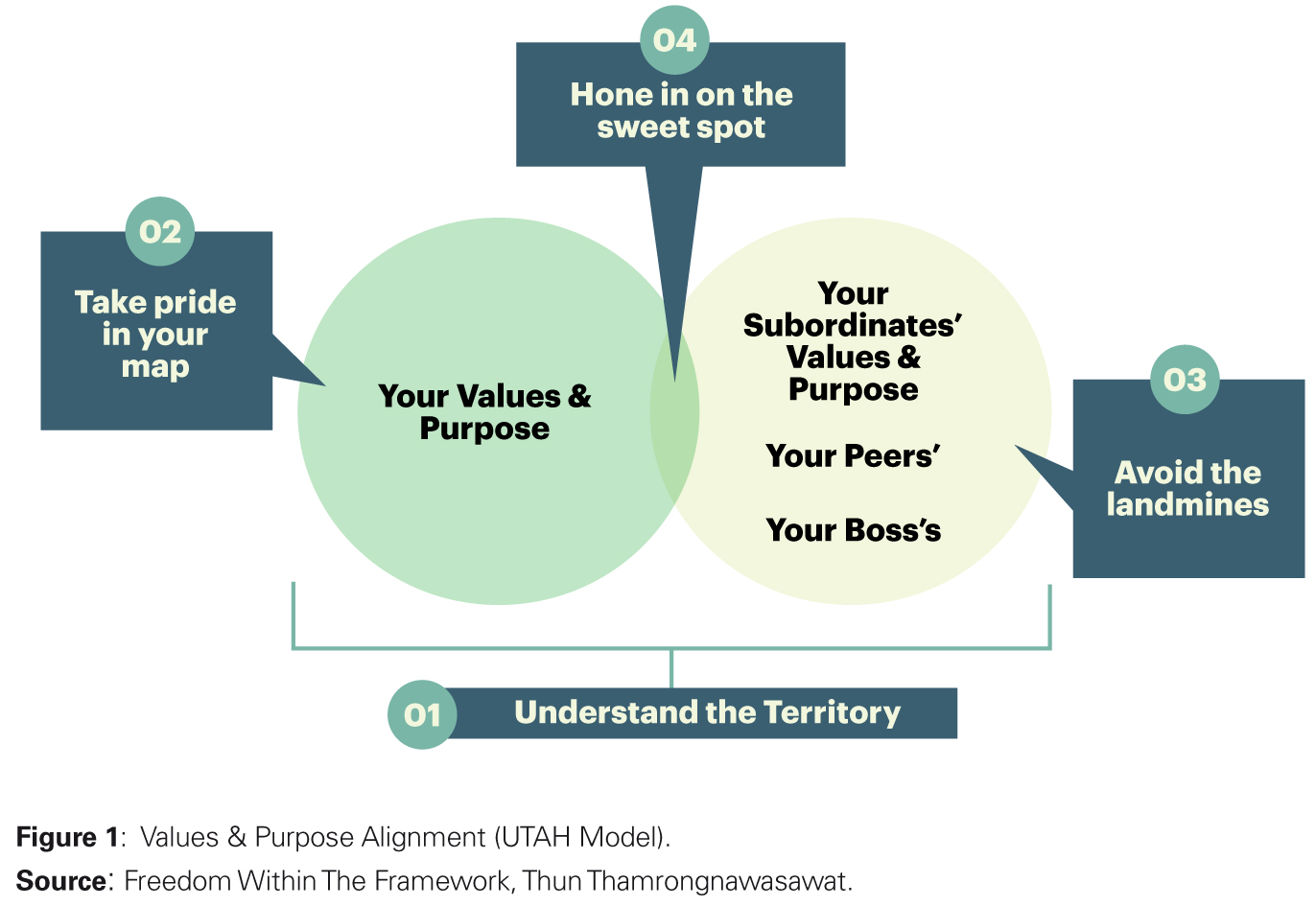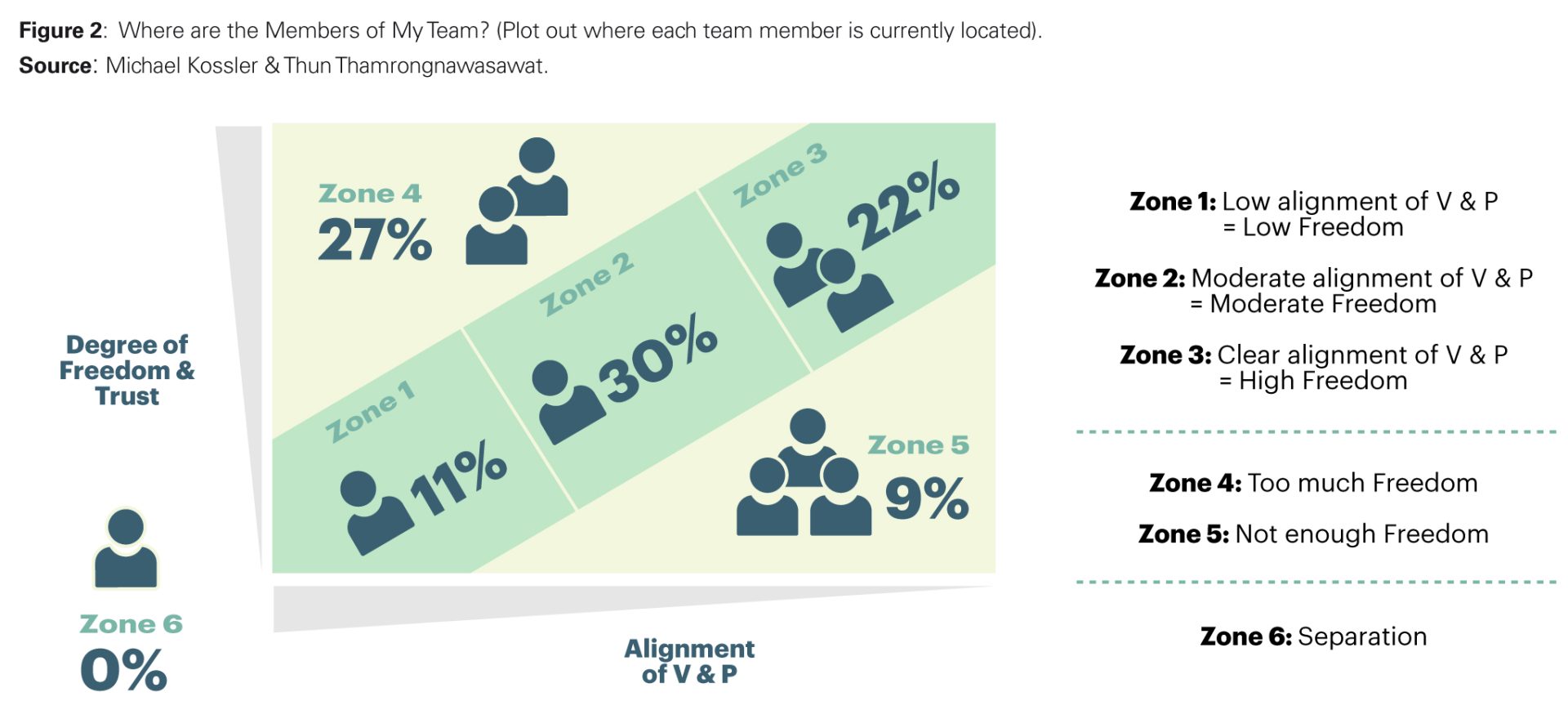Freedom Within the Framework: the Competitive Advantage in a Changing World
Freedom and discipline need not be at odds with each other.
Freedom and discipline need not be at odds with each other.

By Crystal Cha
When discussing freedom and structure within organisations, the two concepts are often seen as polar opposites at odds with each other. Common wisdom holds that small companies can allow autonomy and flexibility but grow more rigid as they scale. For managers trying to strike a balance between what is often seen as opposites, it can feel like a choice between the lesser of two evils: a ‘Wild West’ type of freedom or a bureaucratic hellhole from a Dilbert comic strip.
But freedom and control aren’t necessarily opposites; they can work hand in hand within a framework that provides structure without being suffocating. Dr Thun Thamrongnawasawat, Professor of Practice at the Asia School of Business and prolific leadership author, teaches us how trust and autonomy can enable agility and innovation, how to balance freedom and good governance, and how leaders and managers should rethink the way they manage their people, using the approach called Freedom Within the Framework.
“More than ever, autonomy is a big motivating factor for the current workforce, especially for the younger generation. Increasingly, it is not money that is driving them to quit their jobs, but having the freedom and choice of what to do and how to do it,” said Dr Thun, who has worked with over 100 global companies on strategy, leading change, training, and executive coaching, and specialises in the neuroscience of leadership, with MSc and PhD degrees from the University of Illinois at Urbana-Champaign.
Dr Thun started his career at Boston Consulting Group, before holding a series of management positions in multinationals and eventually devoting his career to his passion of empowering leaders using what is known about the brain, giving him tremendous experience to draw upon when it comes to the science of management.
“People want the autonomy and agency to be able to create change and do things in the way they see fit. Even for those who don’t quit employment to start their own businesses, they may seek out opportunities in the corporate world where they are treated as an intrapreneur,” he added.
Covid-19 has made the increase in autonomy at work even more apparent. More employees than ever are working from home, away from their usual oversight, rules, processes, and in-person interactions. “There are both pull and push factors contributing to the increased need for autonomy and being able to trust your people,” said Dr Thun. “The pull factor is that employees want this. The push factor is that Covid-19 has forced this upon management teams.”
Science backs the value of giving workers greater trust and freedom, as Daniel Pink’s 2009 New York Times bestseller, Drive, highlights, drawing from research including an MIT study. Pink argues that traditional ‘carrot and stick’ approaches to management are insufficient to meet the needs of today’s economy which require businesses to be innovative, creative, and agile. Successful modern workplaces cultivate intrinsic motivation among employees, underpinned by three key components: Autonomy, Mastery, and Purpose.
But the benefits of autonomy don’t come from letting people do whatever they want. “Ironically, it is the companies who are the most disciplined that reap the most benefits of entrusting their employees with freedom,” he argues. “Take Netflix, for example. They got rid of their expense policy and replaced it with a short, simple statement: Act in Netflix’s best interest. But they could do this because they were fanatical and extremely disciplined about their culture and had an extensive culture handbook.”
“Another company closer to home that I can think of is EPF (Employees Provident Fund) Malaysia, which has implemented staggered working hours, telecommuting options, and a flexible benefits programme to enable staff to easily strike a balance between work and their personal lives,” added Dr Thun. For EPF, the key was to enable freedom in the form of flexibility, without compromising on outcomes or key performance indicators. The company reports that since implementing its work-life practices, productivity has increased, along with winning them TalentCorp’s Life at Work Awards 2018 in the Best Public Sector Organisation, CEO Champion and Outstanding Practice (Workplace) categories.
So how much freedom can you give your people while avoiding unnecessary risks, and how do you ensure that, like at Netflix, your team will ‘act in the company’s best interest’? Conversely, how can you know if working constraints are too tight, leading to a lack of trust and agility?
Dr Thun explains that before managers can determine how much freedom to give to their team, they need to understand and map out their values and those of their team. Next, it’s important to understand which ones overlap and which ones don’t, to “avoid the landmines”, as Dr Thun puts it. The final step is honing in on the sweet spot – or the overlap in common values and purpose that both parties share. (See Figure 1)

“Without this map, you might unintentionally step on a landmine – something another person values because it’s not something you value. You might be caught off guard, wondering why this person is suddenly acting difficult and uncooperative,” said Dr Thun.
“There are many ways this model can be applied – between individuals or groups of people,” said Dr Thun as he shared a story of how he applied this model:
“A fellow colleague and I were tasked with running a leadership programme and we were making a decision about whether to host this programme in person or online, given the current Covid-19 situation. We thought that because we had limited the number of participants and would be able to adhere to social distancing protocols, we could safely proceed with running it in person. Our boss was very concerned about this approach. After some discussion, we recognised that the main value driving our boss’ concern was the participants’ safety and well-being. We could find common ground in wanting to ensure people’s safety. So, we decided to run the programme but go a step further – we required all participants to take a swab test before joining us, even though it was not mandatory.”
After a clear map has been made of the team and individuals’ values and purpose, what comes next? This is where the alignment of values and purpose is plotted on a horizontal axis, while the degree of freedom employees have is plotted on a vertical axis. This forms the framework developed by Dr Thun together with Michael Kossler.
“While the concept of ‘freedom within a framework’ has been talked about for a long time, it wasn’t until we put this graph together that managers had a tangible tool to help them map out their framework,” explained Dr Thun.

To use the framework, managers identify where each team member stands in terms of alignment, and how much freedom each one currently has. Anything outside Zones 1 to 3 (see Figure 2) is suboptimal.
“Zone 4 employees are being given unearned freedom. These are the people who will cause you headaches. When there is too much freedom, smart people can do bad things. It’s not only one’s skillset that must be aligned with the job; the heart must be aligned with the company’s values.”
Meanwhile, Zone 5 employees are those with the capacity to perform at a higher level, but have their hands tied behind their backs. “With too little freedom, they stop being invested, start coasting by, and they don’t give you extra effort. They will probably start looking for a new job and that’s where they enter Zone 6 – separation.”
The key is to get employees outside the blue zones into those zones, by either reducing or increasing the amount of freedom given. For employees in Zones 1 and 2, the key is to work on increasing alignment, so that freedom can gradually be increased as well.
One of the practical considerations with implementing Freedom Within a Framework is that it should be done on multiple levels to see where the overlaps are at an organisational, team, departmental, and individual level. And mapping it out is only the beginning.
“For this to be effective, people must talk about it. The hidden must be made visible. Groups must be brought together or it won’t take long before people start stepping on each other’s landmines and talking behind each other’s backs. Trigger points are aplenty – finding common ground requires intentionality,” said Dr Thun. Beyond the workplace, he even uses this approach with his kids and spouse to build alignment through connecting on common values.
In today’s fast-changing world, alignment is more critical than ever to survive, adapt, and thrive. “Rules and governance are prescriptive. In light of Covid-19, it’s clearer than ever that we cannot fully know everything that will happen and prepare for all scenarios,” said Dr Thun.
“Instead of governing through rigid dos and don’ts, organisations can build greater resiliency, agility, and adaptability by giving people a framework to work freely within, guided by common values and shared purpose.”
Crystal Cha is Assistant Director, Content Marketing at Asia School of Business. She holds an MBA and BA (Hons) in Multimedia Journalism.